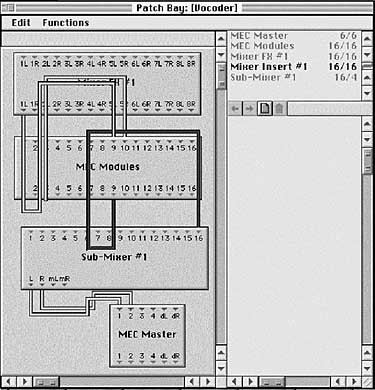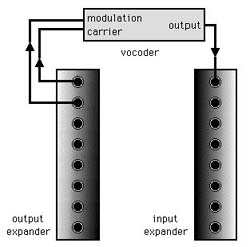
Using Analog Effects with PARIS
By Craig Anderton
PARIS has a lot of cool onboard effects, but it doesn't have several I've come to know, love, and abuse over the years: Roland SVC-350 vocoder, home-built ring modulator, Aphex tube parametric, etc. What can you do when you have an analog heart and a digital brain?
This is where the Aux Send section comes into play. In addition to sending to the onboard effects, you can also choose a destination of "external." The external connections show up in the Patch Bay's Mixer FX#1 object. From there, you can route the Aux Sends to whatever outputs you want, but it certainly helps if you have the EDS-A8oT-24 module, which provides eight 24-bit outs. This means you can have four stereo, or eight mono, effects sends going to various analog effects.
To bring the effects back into the system, you can use the FX returns, or patch to channels in the main mixer if you want to use the long-throw faders and PARIS's onboard effects.
Anyway, there's no law that says you have to use a vocoder only with voice. For example, I like to use drums to modulate other parts, like guitar. This superimposes a highly rhythmic effect on the guitar. With PARIS, the basic idea is to send the guitar and drum channels to external outputs that patch into the vocoder, then bring the vocoder output back into the system. (PARIS gets bonus points for the master send control, which can bring the output way down if desired - enough to feed older analog effects designed for low-level operation.)
Fig. 1 shows the patch bay connections within PARIS needed to implement this vocoder processing. Aux Send 1L goes to output 1 of the 24-bit output expander; this carries the guitar signal, which is the vocoder's carrier. Aux Send 2L goes to output 2 of the 24-bit output expander, and carries the drum signal. This patches to the vocoder's modulation input so that it "vocodes" the guitar. The vocoder output returns through input 1 of the 24-bit input expander, and patches to mixer channel 16 to allow for automation, EQ, and reverb using PARIS's internal effects.

Fig. 2 shows what happens to these signals once they hit the outside world.

- Set whatever signal processors you use to processed sound only (no dry signal). The
channel faders themselves provide the dry signal.
- It's important that the processor signal be in-phase. Otherwise, the more processed signal you bring up, the greater the odds of phase cancellation messing with your sound.
Now let's look at three other ways to use aux busses.
© 2002 All Rights Reserved E-MU / ENSONIQ